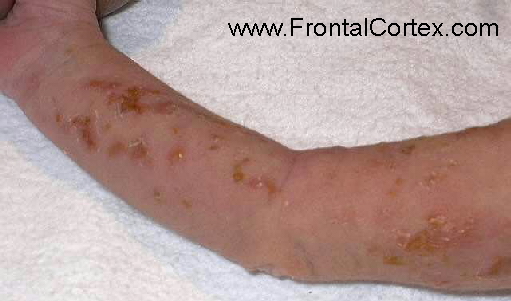Last modified on Saturday, February 17 2007.

Image (C) 2000-2005 Auckland District Health Board
You are called to evaluate a newborn girl with unusual skin findings shown in the images above.
The patient's mother suffers from mental retardation, seizures, and dental abnormalities.
Which of the following statements about this child's condition are true?
This patient's history and skin findings are characteristic of incontinentia pigmenti. This is an X-linked dominant disorder. (
This patient's history and skin findings are characteristic of incontinentia pigmenti. The skin changes result from melanin lost from epidermal basal sells. (
This patient's history and skin findings are characteristic of incontinentia pigmenti. This is an X-linked dominant disorder. (
This patient's history and skin findings are characteristic of incontinentia pigmenti. This is an X-linked dominant disorder mapping to a gene at Xq28. (
This patient's history and skin findings are characteristic of incontinentia pigmenti. This is an X-linked dominant disorder which is usually lethal in males. (
























